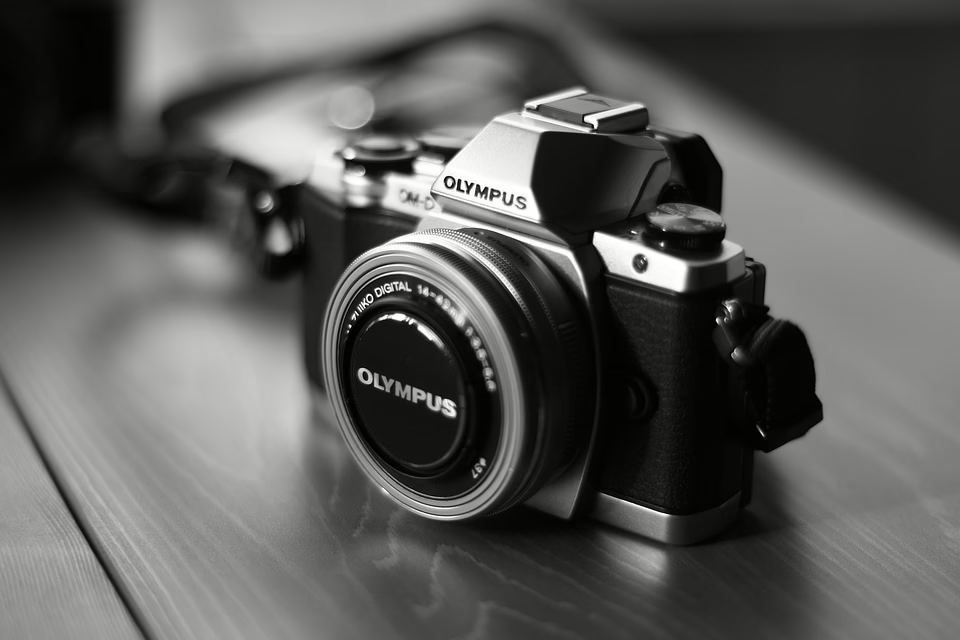High-Flying Prices: Are Premium Drone Cameras Worth the Investment?
In recent years, drone technology has advanced significantly, popularizing the use of aerial photography and videography across various industries. This has led to a surge in the availability of premium drone cameras, which often come with hefty price tags. This article explores whether investing in these high-end drone cameras is worthwhile, evaluating their features, advantages, and potential return on investment (ROI).
1. The Rise of Drone Technology
1.1 History and Evolution
Drones, also known as unmanned aerial vehicles (UAVs), were initially developed for military purposes. Over the last two decades, however, they have transitioned into civilian applications, ranging from recreational use to professional services in photography, agriculture, and surveillance.
1.2 Growing Market Demand
The market for drone technology, especially in photography and videography, has seen exponential growth. According to the Federal Aviation Administration (FAA), the number of registered drones in the U.S. has surpassed 1.7 million. This rising demand has prompted manufacturers to innovate and introduce premium models that cater to the needs of professional users.
2. Understanding Premium Drone Cameras
2.1 Defining Premium Features
Premium drone cameras generally offer advanced features, such as:
- High-Resolution Cameras: Most high-end drones come equipped with 4K or even 8K video capabilities, along with superior sensors.
- Stabilization Technology: Gimbals and advanced stabilization systems reduce shaky footage.
- Flight Range and Battery Life: Premium drones tend to have longer flight ranges and increased battery efficiency.
- Obstacle Avoidance: High-end models utilize sensors to detect obstacles in their flight path, enhancing safety.
- Customizability: Many premium drones allow users to attach various lenses and accessories.
2.2 Economics of Drones
The investment in a premium drone camera can be considerable. Starting prices for high-end models often exceed $1,000, and they can escalate to several thousand dollars for specialized features or capabilities.
3. Assessing Value for Money
3.1 Who Benefits from Premium Drones?
Before investing, it’s crucial to understand who will find value in such purchases:
- Professional Photographers and Videographers: Those engaged in commercial work demand high-quality footage, making premium drones a reasonable investment.
- Real Estate Agents: High-quality aerial shots can significantly enhance property listings.
- Agricultural Businesses: Farmers utilize drones for crop monitoring, which can lead to increased yield and reduced costs.
3.2 Comparing with Entry-Level Drones
While premium drones offer advanced features, entry-level models are often available at a fraction of the cost. For amateur users or hobbyists, these drones provide reasonable performance for less demanding applications.
3.3 Long-Term Cost vs. Short-Term Gain
When evaluating the ROI for premium drone cameras, consider long-term benefits. High-quality footage can attract more clients for freelance photographers or enhance marketing strategies for businesses.
4. Pros and Cons of Premium Drone Cameras
4.1 Advantages
- Image Quality: Premium drones yield superior image quality, enhancing the visual storytelling aspect.
- Durability and Reliability: These drones are often built with better materials, making them more robust.
- Advanced Features: Offer functionalities that can save time and enhance productivity.
4.2 Disadvantages
- Cost: The significant upfront investment may deter potential buyers.
- Learning Curve: Advanced features may require a longer learning period, especially for beginners.
- Maintenance Costs: Expensive parts and potential repairs can add to overall expenditure.
5. Key Considerations Before Investing
5.1 Purpose and Usage
Identify the primary purpose of the drone. Clarifying whether it will be for personal, professional, or commercial use can help determine if a premium model is essential.
5.2 Budget Constraints
Evaluate whether the potential earnings or benefits can justify the investment. It may be worthwhile to start with an entry-level model and upgrade later as skills and needs evolve.
5.3 Future-Proofing
Consider future needs and advancements in technology. Investing in a premium model may provide longevity if it’s equipped with features designed to adapt to evolving demands.
6. Expert Opinions and User Experiences
6.1 Interviews with Industry Professionals
Professional drone operators often have valuable insights into the cost-effectiveness of premium drones. Many report that the initial investment paid off through increased client demand and versatility.
6.2 User Experiences
Reviews from everyday users provide context for the performance of premium drones versus their budget counterparts, shedding light on the significance of features like camera quality and flight stability.
7. Alternatives and Budget Options
7.1 Entry-Level Drones
Numerous entry-level drones provide excellent performance for casual users. Drones like the DJI Mini series offer features such as 2.7K recording and GPS at a fraction of the price.
7.2 Refurbished or Older Models
Purchasing refurbished or older models can be a cost-effective alternative while still providing many premium features.
7.3 Renting Options
For occasional users, renting a premium drone for specific projects may be more financially viable than purchasing one outright.
8. Conclusion: The Worth of Investment
Investing in a premium drone camera is a significant decision that varies based on individual circumstances, goals, and financial considerations. For professionals in photography, videography, and other specialized fields, the benefits often outweigh the costs. In contrast, amateur users may find that entry-level models suffice for their needs.
Ultimately, evaluating individual use cases, requirements, and potential ROI is vital in making an informed decision. As technology continues to advance, so too will the offerings in the drone market, making it essential to stay up-to-date with trends and innovations.
References
- Federal Aviation Administration (FAA). (2021). Drone Registration Statistics. Retrieved from FAA.gov
- Smith, J. (2020). Drones: The Future of Aerial Photography. Aerial Review, 5(4), 45-58.
- Johnson, M. (2022). A Comprehensive Guide to Choosing the Right Drone. Drone Magazine, 7(2), 22-35.
- Williams, L. (2023). Are Premium Drone Cameras Worth the Price? A Study of Professional Users. Journal of Aerial Technology, 10(1), 66-75.
This article outlines various aspects of the drone camera market and provides a comprehensive overview of the factors influencing investments in premium drone technology. As the drone landscape continues to evolve, potential buyers will need to stay informed and consider their individual preferences and requirements when making a purchase.


























Add Comment